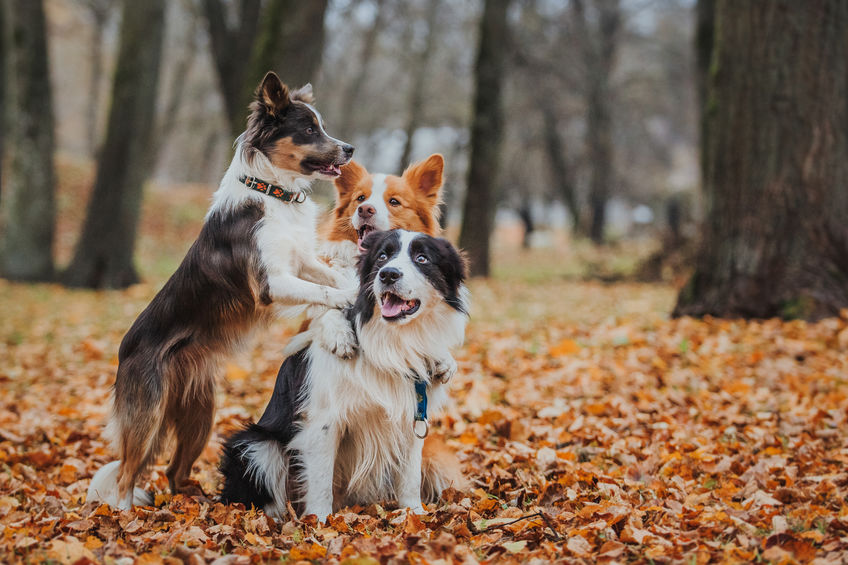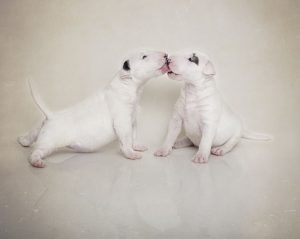

How Long Does a Dog Stay in Heat?
If you and your family are the proud owners of a new little puppy girl, you may also find yourselves with the experience of having a dog in heat for the first time. This basically means that your puppy has grown into a mature female dog that is ready to begin reproducing.
As a pet owner, there are reasons why you may or may not want this to occur. Today we’ll answer the popular question “how long does a dog stay in heat,” as well as taking a closer look at what exactly this period means.
What is “Heat?”
When people say their dog is in “heat” what they are saying is that their dog is ready to mate and will accept male dogs’ advances. For most female dogs, this occurs after the age of six months. However, the range for dogs reaching sexual maturity is wide. While there is no easy way to figure out when a dog will begin their reproductive cycle, here’s a simple rule of thumb: smaller dogs usually cycle faster than larger dogs.
So, a Chihuahua will likely mature much sooner than a large breed. Not only will smaller dogs begin their cycle earlier than large dogs (generally), but smaller dogs have also been known to have more cycles per year than larger dogs.
A small dog can have three or four heat cycles per year while some larger breeds may only have one. While the exact timing of a dog’s heat cycle can’t exactly be nailed down, what is certain is what the cycle consists of.
How Long Does a Dog Stay in Heat?
A dog’s cycle consists of four stages:
- Anestrus – This is the stage your dog will spend most of their life in. This is “resting” time for your dog’s reproductive system and your dog should be acting normally during this time.
- Proestrus – This is the time where a female dog can start attracting male suitors. This period lasts only a week or two and is not the prime puppy making time. During proestrus, a female dog is showcasing that they will be receptive soon, but not yet. They usually won’t let another dog mount them during this phase. You may note your dog entering this phase by an enlarged vulva and your dog may have a bloody discharge.
- Estrus – This is prime puppy making time. The bloody discharge will change to a more straw color and your dog will still have a swollen vulva. She will also be receptive to mating during this period. If you are a breeder, this is showtime. If you are not a breeder, this is the time where you must keep a close eye on your dog to ensure there are no accidental pregnancies. You’ll always want to be sure to supervise her and keep a leash on her when out for walks.
- Diestrus – During this phase, the dog’s vaginal discharge will discontinue, and she will be unwilling to mate anymore. If mating was successful, the dog will grow her puppies for about 65 days before giving birth. If mating was not successful, this phase can last 75-90 days, and the dog will show no obvious signs of pregnancy.
The phrase “in heat” refers to the proestrus and estrus. That’s the time you’ll notice most in your dog’s cycle. This period lasts about 21 days, or three weeks.
As a reminder, young dogs (like adolescent humans) have unstable cycles. Their symptoms may vary. For instance, they may not pass blood, or their cycle time may vary.

Signs That a Dog is in Heat
Not sure if your dog is in heat? Here are some indicators that your dog is in heat:
- Swollen vulva
- Attention seeking
- Passing blood
- Attentive to male dogs
- May attempt to mount other dogs
Your dog may not show all these symptoms, but all are indicators your dog is in heat.
Keeping Your Dog Happy and Safe During Heat
While in heat, your dog transforms. Her behavior, energy levels and personality impact her day-to-day living. Therefore, consider helping her along.
First, if you don’t want your dog to become pregnant, keep male dogs away. Believe it or not, male dogs can smell a dog in heat from miles away. When taking walks, keep your dog on a leash. When it the yard, keep a watchful eye on her as male dogs have been known to jump fences to meet a dog in heat.
Second, keep her groomed. Your pup’s physical symptoms of heat will include the passing of bloods and increased circulation to her genitals. Keep her nice and clean to avoid unwanted odors and infections.
Third, be attentive to her energy levels. Your lady pup will likely have low energy while in heat. It’s important that you keep her active but not overwork her. When she wants to rest, let her rest. Be sure to spend time cuddling her too. She needs attention during this time.
Lastly, consider buying doggy diapers. These can help catch bloods and protect your floor and furniture. There are disposable and reusable dog diaper options available.
Is a Dog Receptive to Mating Throughout Their Lives?
Dogs go into heat about every six months once they reach 18 months of age. However, smaller breeds have been known to go into heat more often (three or four times per year).
Female dogs don’t go through “menopause” or stop going into heat as they age. As they age, female dogs will experience heat less frequently. Going many months or years between cycles is normal for older dogs.

Consider Spaying Your Dog
The best way to ensure your dog’s comfort and avoiding pregnancy is to spay your dog. Spaying is the process of ovary or ovary and uterus removal. There are some great health benefits to spaying your dog, too. For instance, spayed dogs tend to live longer. Additionally, by spaying your dog, all the stress that takes place with going through heat is eliminated.
Most dog owners spay their dogs before their first heat. Unless you’re a certified dog breeder, it’s the safest precaution you can take for your dog.










